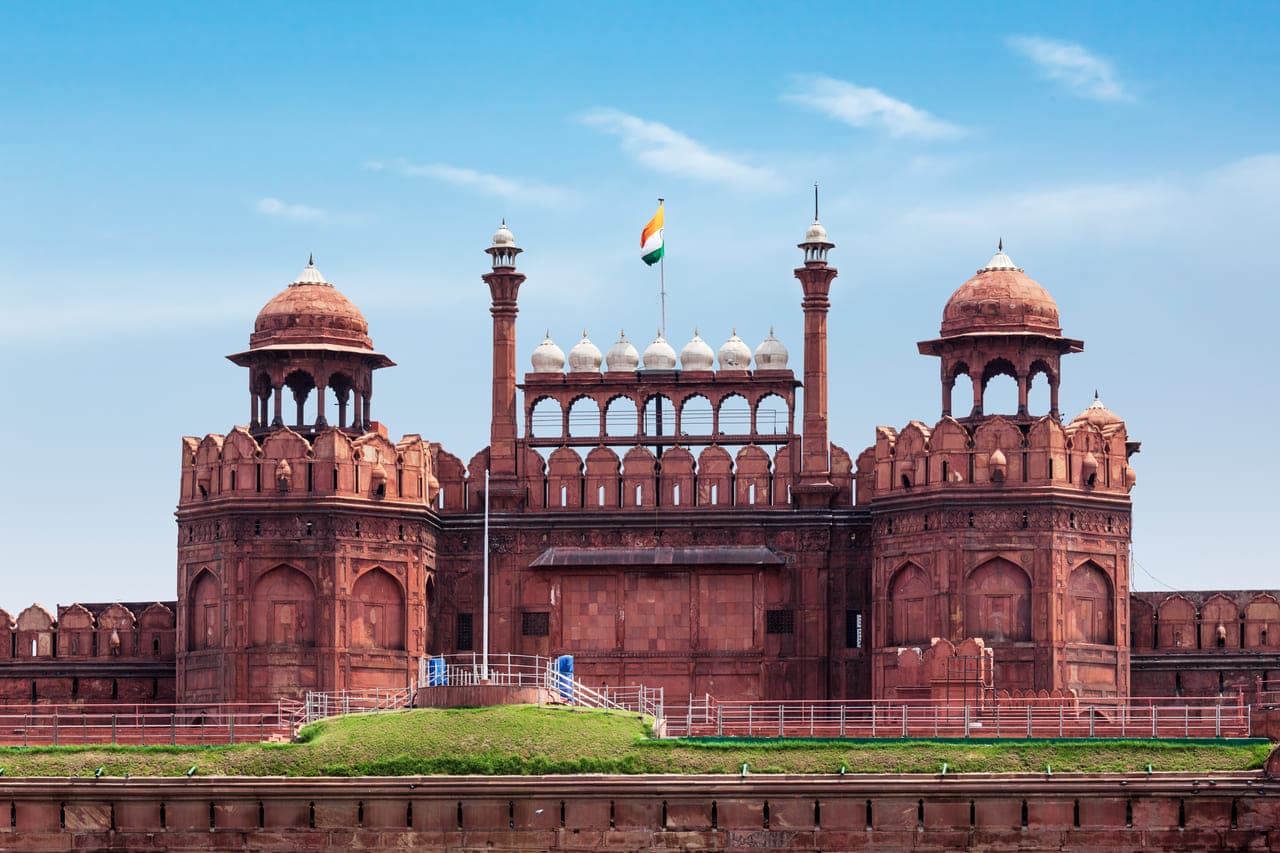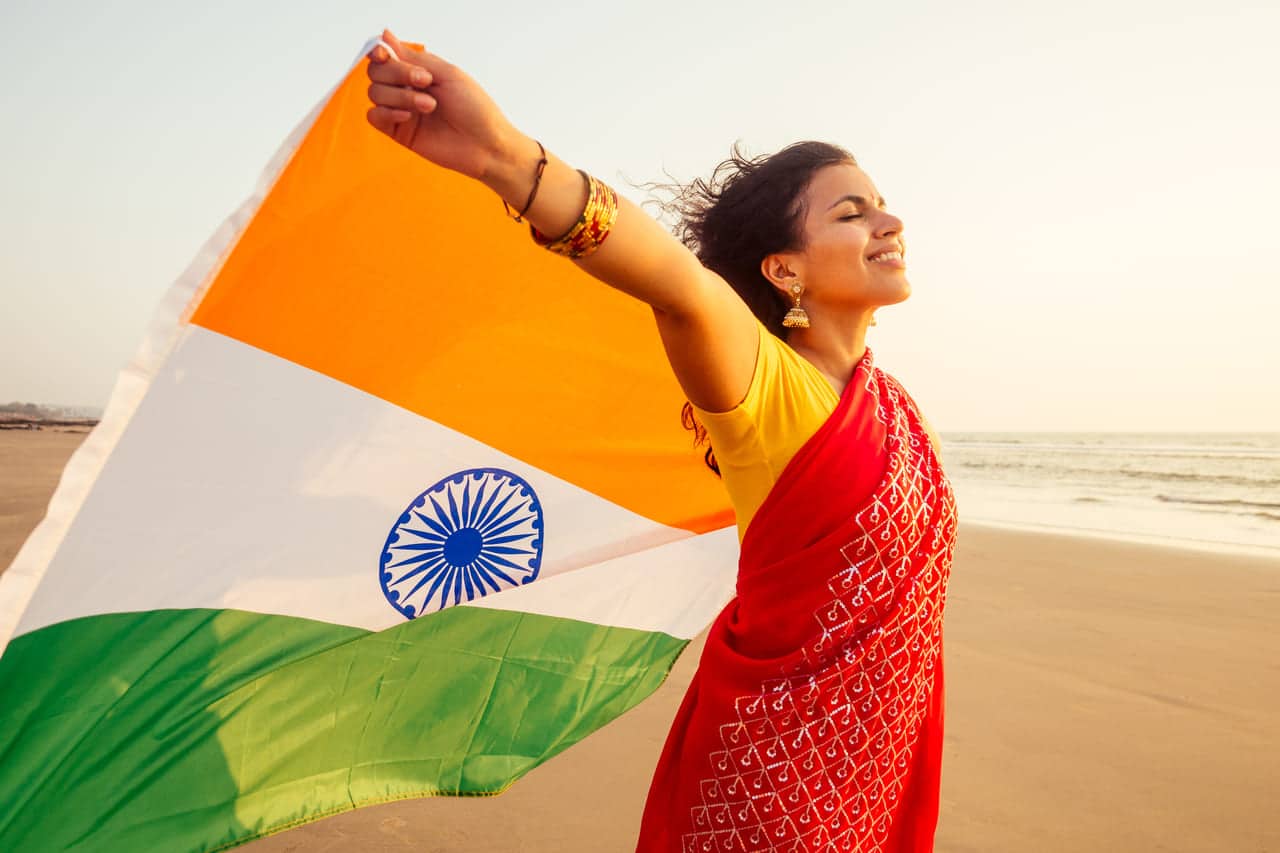Overview of India
India’s name comes from the River Indus which was important in ancient times. It’s a big country in South Asia which got independence from the British in 1947. Now it’s the largest democracy in the world with over 1.4 billion people.
India is surrounded by the Indian Ocean on the south, Arabian Sea on the southwest and Bay of Bengal on the southeast. It shares borders with Pakistan to the west; China, Nepal and Bhutan to the north; and Bangladesh and Myanmar to the east.
India is near Sri Lanka and Maldives in the Indian Ocean. Its Andaman and Nicobar Islands have maritime borders with Thailand, Myanmar and Indonesia. India covers an area of 3,287,263 square kilometers from the snowy Himalayas in the north to the tropical forests in the south.
Indian food is super famous with dishes like curry, biryani and samosas. And amazing places like the Taj Mahal. India has a history of thousands of years with old texts like the Rigveda.

History of India
India’s history is fascinating and very long. The earliest humans in South Asia lived around 30,000 years ago. By 7000 BCE people started to settle down and farm. This led to the Indus Valley Civilization which started around 2500 BCE and lasted till 1900 BCE. People lived in cities with impressive systems of water management and trade with other regions.
In Medieval India, different parts were ruled by powerful empires like Mauryas and Guptas. The Mauryan Empire was famous for its army and Buddhism. The Gupta Empire focused more on art, science and literature. Many developments happened during this period.
In early modern times, the Mughal Empire came into power. They built amazing structures like the Taj Mahal. This was also when European powers, especially the British East India Company started coming. Later the British took control of India and colonization happened.
India’s modern era started between 1848 and 1885. Lord Dalhousie, the Governor General, brought railways, canals and telegraphs. The Indian Rebellion of 1857 happened because many were not happy with British rule. This led to direct rule by the British government.

Geography of India
India is above the equator and covers 3.2 million sq km. It is 3,214 km from north to south and 2,933 km from east to west making it the 7th largest country in the world.
India’s geography is amazing. In the north you have the Himalayas, Kangchenjunga the highest point at 28,169 feet. Ganges river, India’s longest river flows through the northern plains. Ganges-Brahmaputra system covers most of northern, central and eastern India.
In the south you have the Deccan Plateau, a big raised area. India has many different landscapes like forests, plains and deserts like the Thar Desert. The coastline is long with the Indian Ocean in the south, Arabian Sea in the southwest and Bay of Bengal in the southeast.
The climate is very varied. It’s tropical in the far south but very cold in the Himalayas with alpine and tundra conditions. Geologically India lies on the Indian Plate which is part of the larger Indo-Australian Plate. The country has mountains, plains, rivers and forests, so it’s a great place to discover.
States and union territories of India
India has 28 states and 8 union territories, 36 in all. Each state has its own government, while union territories are governed by the central government. These states and territories are further divided into 785 districts.
States:
- Andhra Pradesh
- Arunachal Pradesh
- Assam
- Bihar
- Chhattisgarh
- Goa
- Gujarat
- Haryana
- Himachal Pradesh
- Jharkhand
- Karnataka
- Kerala
- Madhya Pradesh
- Maharashtra
- Manipur
- Meghalaya
- Mizoram
- Nagaland
- Odisha
- Punjab
- Rajasthan
- Sikkim
- Tamil Nadu
- Telangana
- Tripura
- Uttar Pradesh
- Uttarakhand
- West Bengal
Union Territories:
- Andaman and Nicobar Islands
- Chandigarh
- Dadra and Nagar Haveli and Daman and Diu
- Lakshadweep
- Delhi (National Capital Territory)
- Puducherry
- Jammu and Kashmir
- Ladakh
Climate of India
India has a tropical monsoon climate. The Indian Meteorological Department says there are four seasons: winter (December to February), summer (March to May), monsoon or rainy season (June to September), and post-monsoon (October and November).
India’s climate is so varied because the country is so big and has so many different landscapes. In the west you have dry and semi-dry areas, in the north you have cold climates in the Himalayas, some places are like the Arctic! Some northern cities like Srinagar have continental climate due to their high altitude.
In contrast the south and east are warm and wet, great for rainforests. The northern lowlands have subtropical climate, hot summers and mild winters. Different places can have very different weather even if they are close to each other. That’s why India is one of the most climatically varied countries in the world.
With such varied weather you can find everything from snowy mountains to hot deserts and lush rainforests in India.

People of India
Indian or Indians are the citizens of India. The population is very diverse with many ethnic groups. Long ago the Indus civilization flourished from 2500 to 1700 BCE in the region. Later the Aryan civilization spread across north-central and northwestern India.
India has been invaded by Persians, Scythians, Arabs, Mongols, Turks and Afghans. These invasions have contributed to India’s ethnic mix. Different regions have unique ethnic features. For example some people in north-central areas look like Europeans while those in the northeast look like Tibetans and Burmans.
India also has tribes connected to Southeast Asian groups and some populations from East Africa. That makes India the most ethnically diverse. All this makes India an awesome place with awesome culture.

Top Tourist Attractions in India
India has a lot to offer to tourist attractions, from historical monuments to natural wonders. Here are the top 20 must visit places that showcase India’s diversity, along with why each is famous and where it’s located:
- Taj Mahal, Agra – A UNESCO World Heritage site, this white marble mausoleum is famous for its architecture and romance.
- Amber Fort, Jaipur – Located in Rajasthan, this fort is known for its Hindu-style art and view of Maota Lake.
- Varanasi Ghats, Varanasi – On the banks of Ganges River, these ghats are significant for religious and cultural rituals in one of the oldest cities in the world.
- Kerala Backwaters, Kerala – A network of lagoons and lakes parallel to the Arabian Sea coast, famous for houseboat cruises and backwater landscapes.
- Red Fort, Delhi – A symbol of India’s history, this massive sandstone fort was the main residence of Mughal emperors.
- Qutub Minar, Delhi – The tallest brick minaret in the world, this UNESCO site is famous for its carvings and history.
- Gateway of India, Mumbai – An arch monument built in the 20th century in Mumbai, it overlooks the Arabian Sea and is a symbol of colonial era.
- Hawa Mahal, Jaipur – Known as the “Palace of Winds”, this pink sandstone building has 953 small windows for royal ladies to watch street festivals unseen.
- Goa Beaches, Goa – Famous for golden sands, vibrant nightlife and Portuguese heritage, these beaches are a must visit for relaxation and adventure.
- Meenakshi Temple, Madurai – Located in Tamil Nadu, this ancient temple is famous for its towering gopurams (gateway towers) with vivid sculptures.
- Khajuraho Temples, Madhya Pradesh – Famous for erotic sculptures and intricate art, these medieval temples are a UNESCO World Heritage site.
- Rann of Kutch, Gujarat – A seasonal salt marsh famous for white desert landscape, traditional crafts and Rann Utsav festival.
- Jim Corbett National Park, Uttarakhand – India’s oldest national park, famous for Bengal tiger and wildlife.
- Leh-Ladakh, Jammu and Kashmir – Famous for landscapes, Buddhist monasteries and adventure sports like trekking and river rafting.
- Mysore Palace, Karnataka – A beautiful example of Indo-Saracenic architecture, this palace is illuminated with thousands of lights during Dasara festival.
- Sanchi Stupa, Madhya Pradesh – One of the oldest stone structures in India, this Buddhist complex is a UNESCO World Heritage site.
- Charminar, Hyderabad – An iconic monument and mosque, famous for four grand arches and bustling markets around it.
- Golden Temple, Amritsar – The holiest gurdwara of Sikhism, famous for golden architecture and peaceful atmosphere.
- Sundarbans Mangrove Forests, West Bengal – Home to Royal Bengal tiger, this UNESCO World Heritage site is the world’s largest coastal mangrove forest.
- Ajanta and Ellora Caves, Maharashtra – Ancient rock-cut caves famous for paintings and sculptures, representing both Buddhist and Hindu traditions.

Facts on Culture and Traditions in India
- Hinduism is the main religion in India.
- 75% of the population is Hindu and 14.2% is Muslim.
- Hindi is the official language and English is an additional official language.
- “Jana Gana Mana” is the national anthem of India written by Rabindranath Tagore.
- The National Song of India is “Vande Mataram”.
- The National Flag of India is Tiranga , which has three horizontal stripes.
- India has 22 official languages.
- India is a secular country with religions like Islam, Christianity, Sikhism, Jainism, Buddhism and Hinduism.
- Indian food uses spices like cinnamon, turmeric, coriander, dried hot peppers, anise and cardamom.
- Different regions in India have different cuisines and food traditions.
- Clothing in India varies from region to region and includes sari, dhoti, lungi, shalwar kameez and kurta-pajama.
- Diwali, the Festival of Lights, is one of the biggest festivals in India.
- Holi, the festival of colors is celebrated with colorful powders and water fights.
- Yoga originated in India and has been practiced for thousands of years.
- Bollywood, India’s film industry produces more movies than any other country.
- Classical Indian dance forms include Bharatanatyam, Kathak, Kathakali, Odissi and more.
- Traditional Indian music includes classical forms like Hindustani and Carnatic.
- Festivals like Navratri, Eid, Christmas and Gurpurab are celebrated across the country with great enthusiasm.

Facts About India
- India is in the continent of South Asia.
- India is the 7th largest country in the world by area.
- India is 13 times bigger than the UK.
- India has a long coastline. The west coast borders the Arabian Sea and the east coast borders the Bay of Bengal.
- Bharat is the official short name for the Republic of India.
- India is the 2nd most populous country and most populous democracy in the world.
- Ganges is one of the major rivers in India.
- The word India is an adaptation of the word Indus.
- There are 9 postal zones in India, 8 regional and 1 functional zone.
- India is north of the equator between 6° 44′ and 35° 30′ north latitude and 68° 7′ and 97° 25′ east longitude.
- India has 46 cities, 8 of which are Megacities – Mumbai, Delhi, Bangalore, Chennai, Hyderabad, Ahmedabad, Kolkata, Surat.
- India’s international dialing code is +91.
- NCR (National Capital Region) is a central planning region and the largest agglomeration in the world in India.
- There are 28 states and 8 Union territories in India (as of 2021).
- Indian Railways is one of the largest employer in the world.
- Mahatma Gandhi, the father of the nation in India, played a key role in India’s freedom.
- India is bordered by Nepal and China in the north-east, Bhutan in the north-west and Myanmar (Burma) in the east.
- The Thar Desert, also known as the Great Indian Desert is in the north-west of India.



